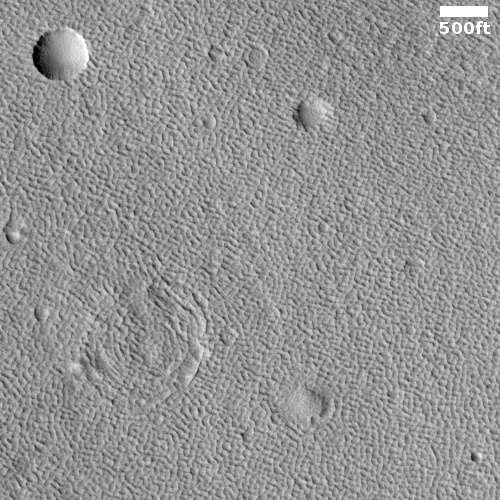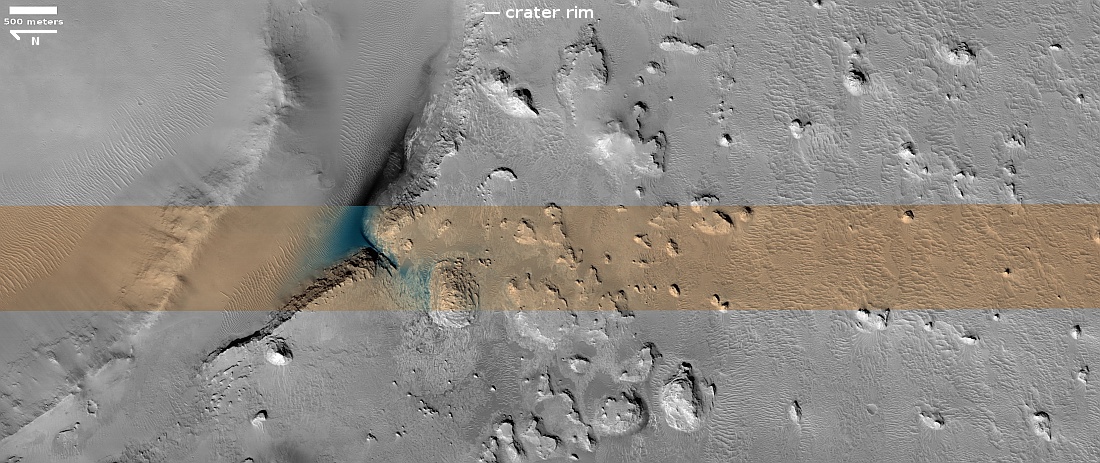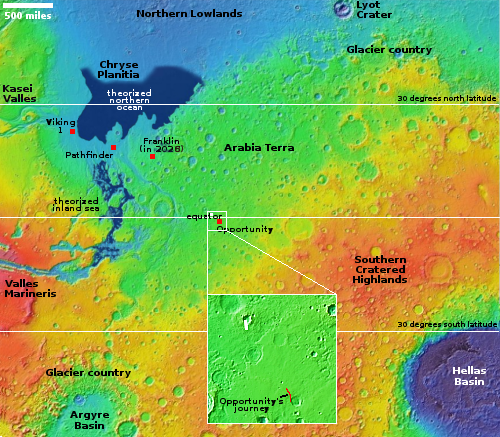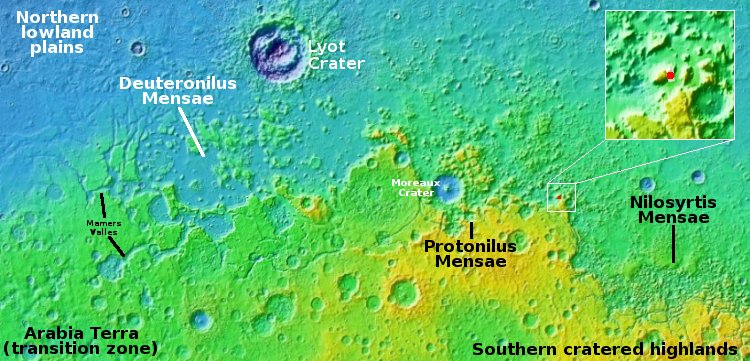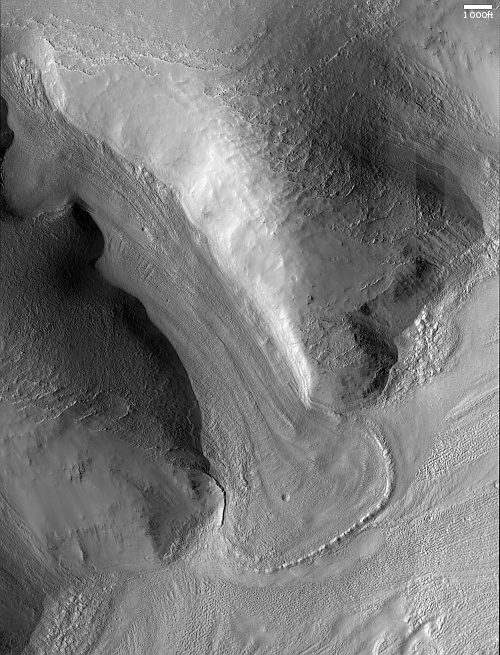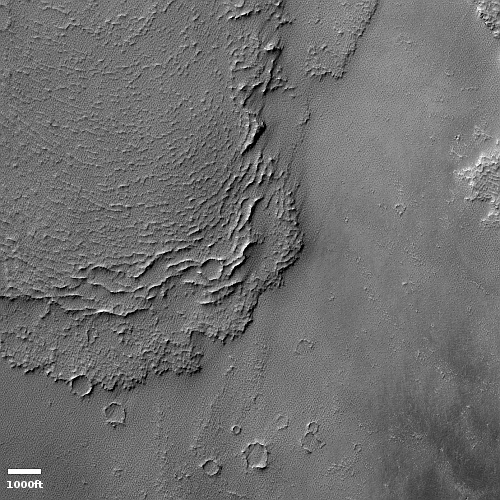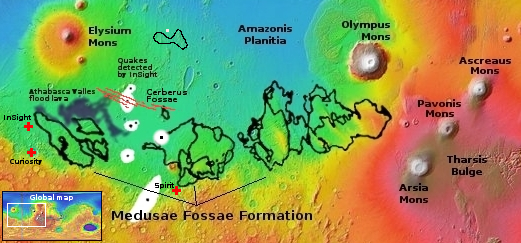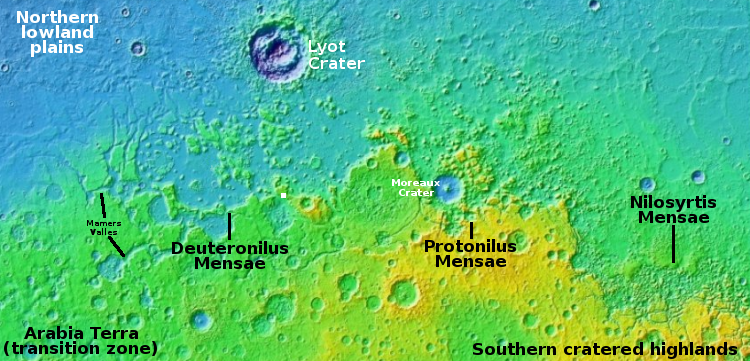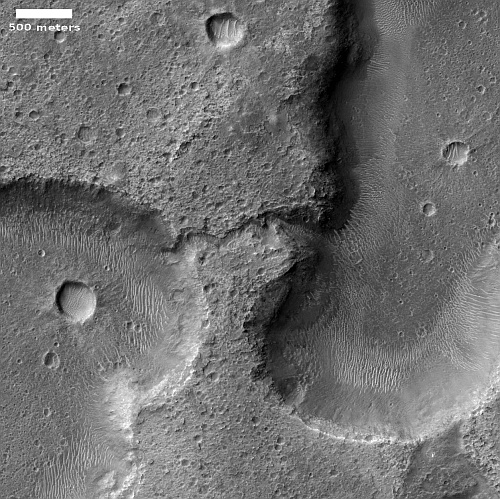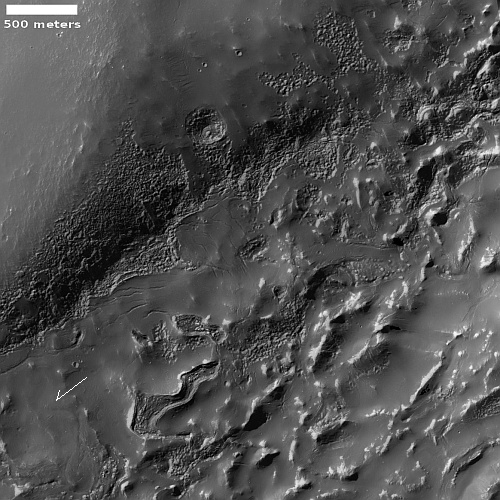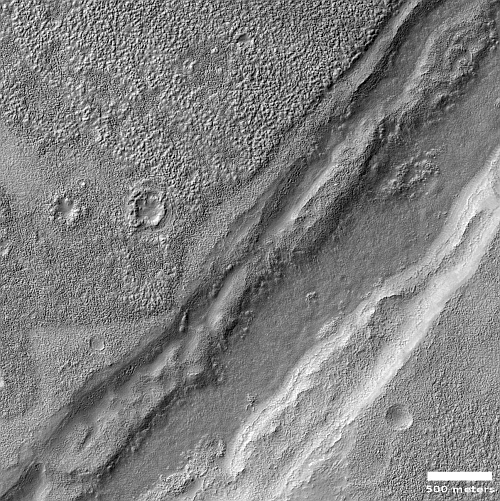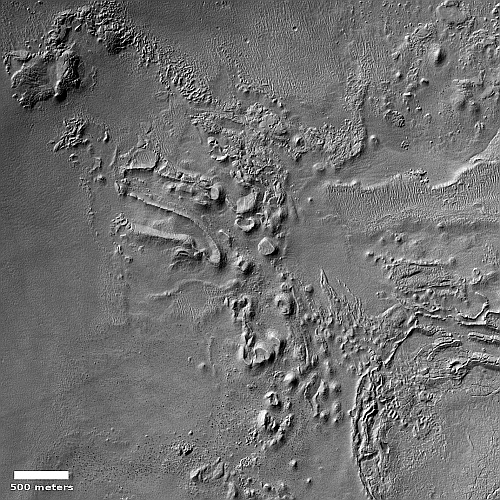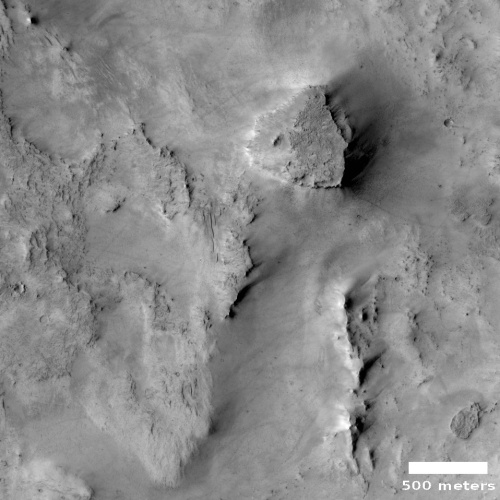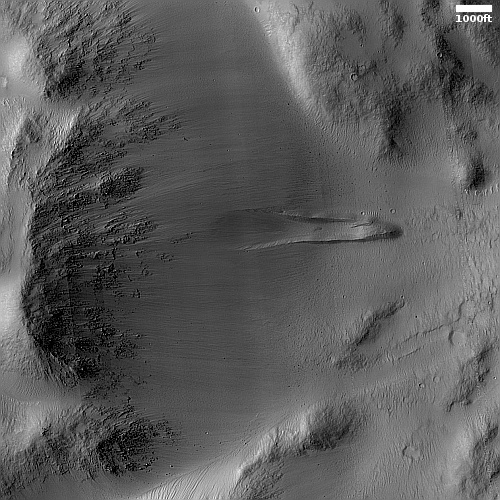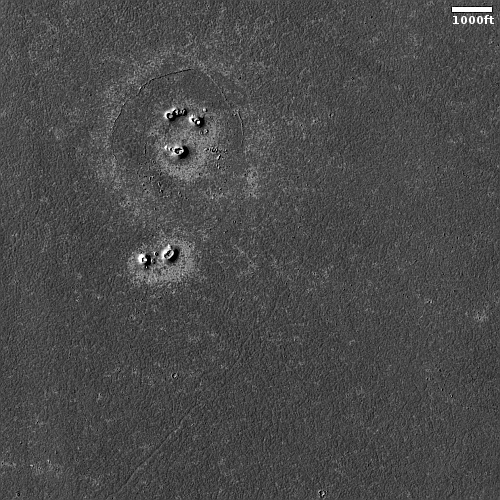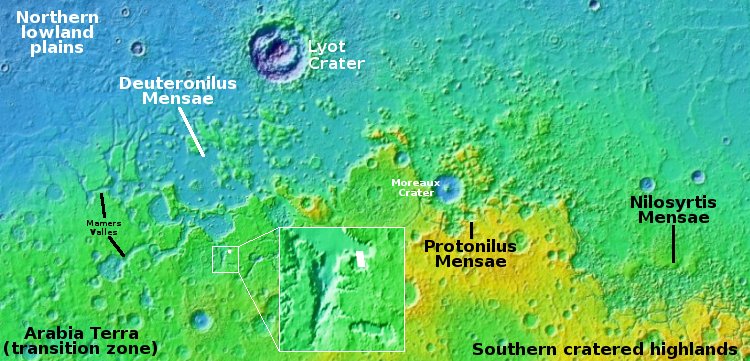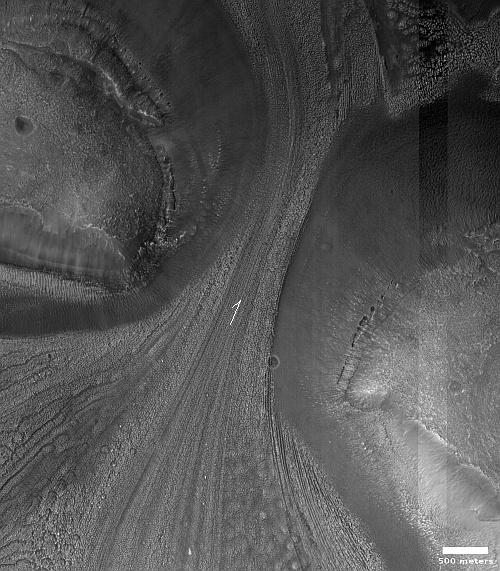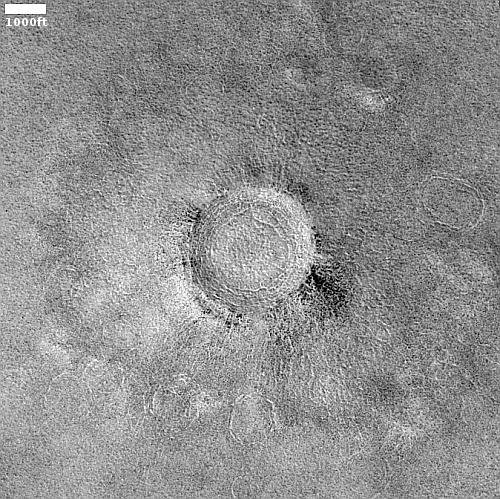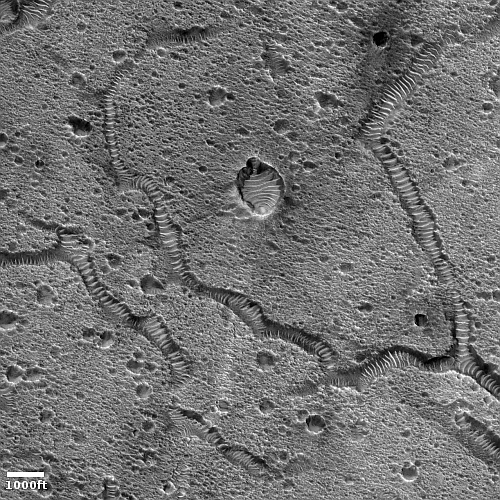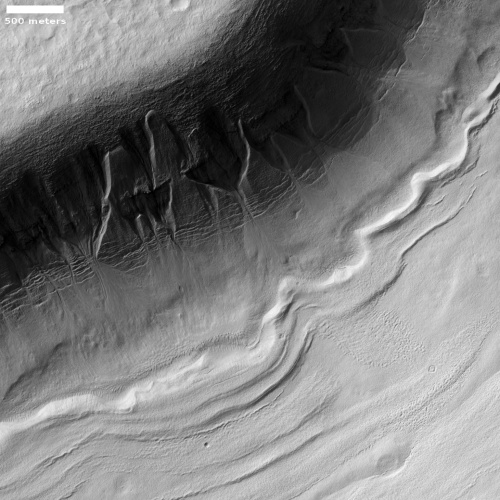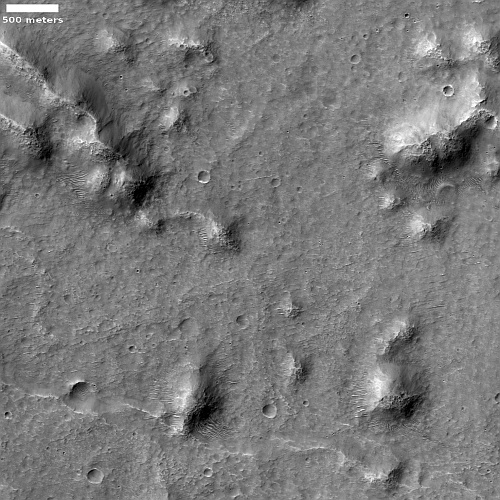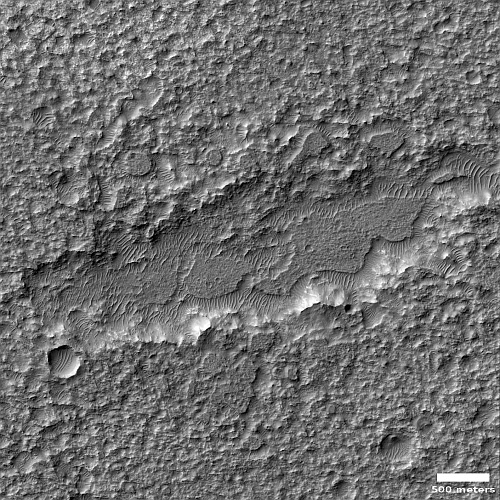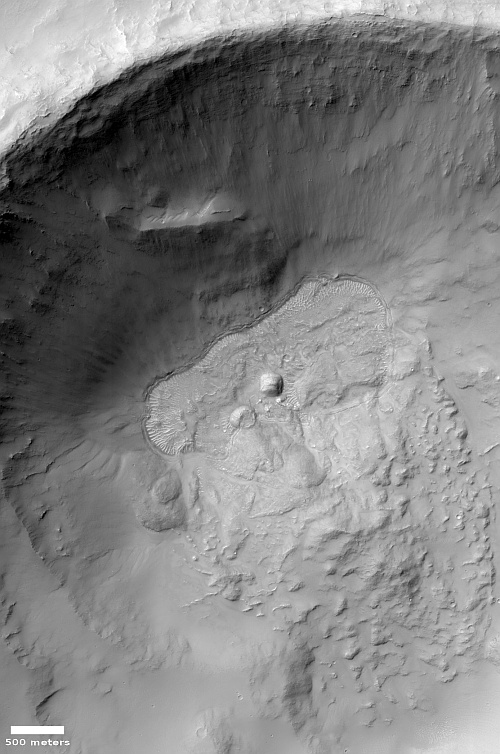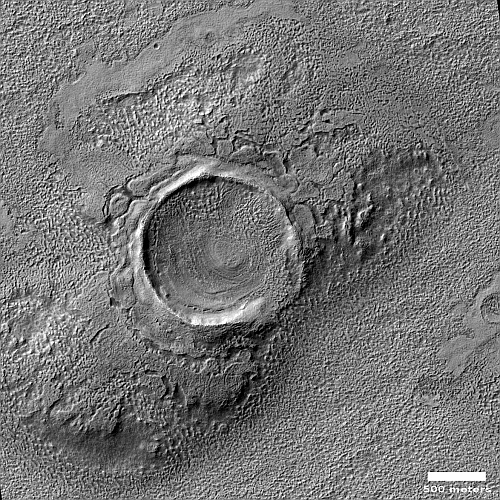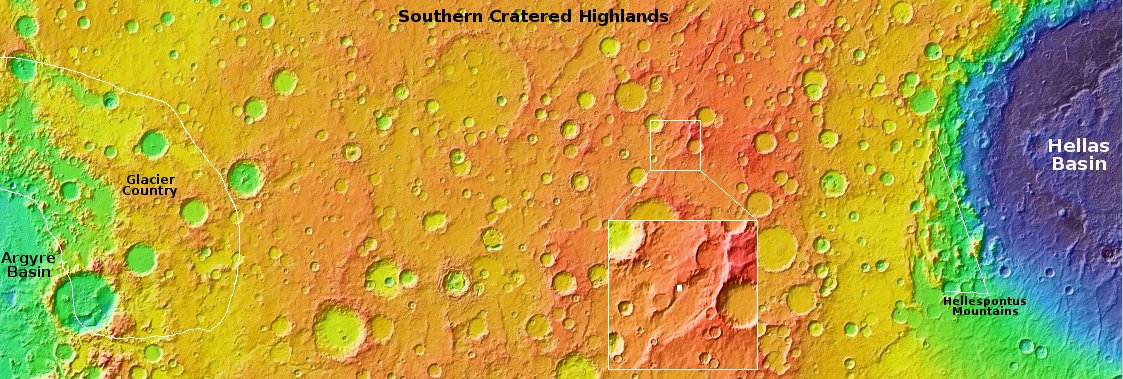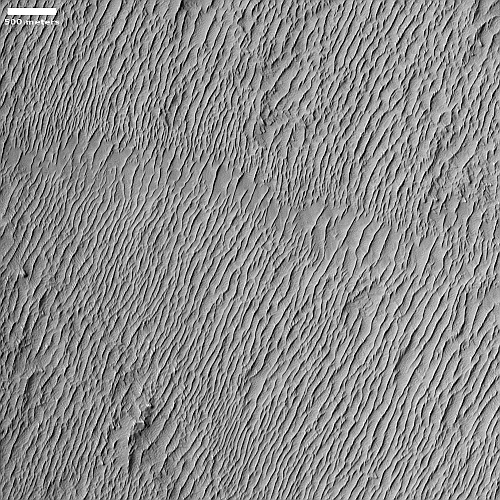Another tourist site for future Starship passengers on Mars
Cool image time! The picture to the right, rotated, cropped, reduced, and sharpened to post here, was taken on April 11, 2023 by the high resolution camera on Mars Reconnaissance Orbiter (MRO). It shows the northwest quadrant of a 7-mile-wide crater whose western rim was smashed by the later impact that created a smaller 2.8-mile-wide crater.
What makes this location interesting is what fills both craters, and how that material appears to flow through a gap in the smaller crater. The color strip suggests the peaks of the rim and small knobs are dust-covered, while the flat materials below are either “coarser-grained materials” that might also have elements of frost or ice within them. The science team thinks ice is involved, having labeled this picture “Ice Flow Features between Craters.”
» Read more
Cool image time! The picture to the right, rotated, cropped, reduced, and sharpened to post here, was taken on April 11, 2023 by the high resolution camera on Mars Reconnaissance Orbiter (MRO). It shows the northwest quadrant of a 7-mile-wide crater whose western rim was smashed by the later impact that created a smaller 2.8-mile-wide crater.
What makes this location interesting is what fills both craters, and how that material appears to flow through a gap in the smaller crater. The color strip suggests the peaks of the rim and small knobs are dust-covered, while the flat materials below are either “coarser-grained materials” that might also have elements of frost or ice within them. The science team thinks ice is involved, having labeled this picture “Ice Flow Features between Craters.”
» Read more




